Emphasis on Type (Thermoset, Thermoplastic); Chemistry (Styrene Block Copolymers (SBCs), Thermoplastic Polyurethanes (TPU), Styrene Butadiene (SBR), Ethylene Propylene Diene Monomer (EPDM), Acrylic Elastomer (ACM), Butyl Elastomer (IIR), Natural rubber) and Application (Residential, Non-Residential, Commercial)
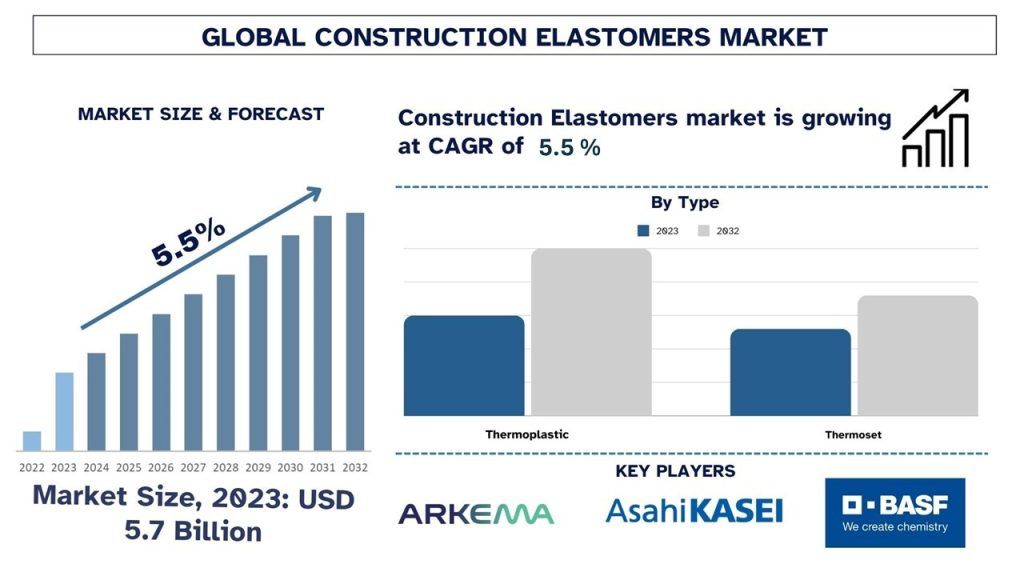
The Construction Elastomers Market was valued at approximately USD 5.7 Billion in 2023 and is expected to grow at a robust CAGR of around 5.5% during the forecast period (2024-2032). The key factors, which are motivating owners of the construction elastomers market are the constant growth of the construction industry, the need for high-strength and flexible materials, and the development of new, eco-friendly constructions elastomers.
The global construction elastomers market is experiencing significant growth due to increasing construction activities in developing countries, supporting government policies for adopting sustainable and environment-friendly materials in the elastomer industry, and promulgating strategic alliances among industry players. Moreover, with the growing focus on cost-cutting & using sustainable materials in developed nations, elastomers come in like a knight in shining armor, providing excellent physical property & molding ability. Elastomers are natural or synthetic polymers having elastic-like properties i.e., they retain their shape after getting stretched/compressed. Elastomers are used to take advantage of both plastic and rubber. This is due to the rise in demand from important application domains along with the advancements in processing technologies.
For example, in 2023, Pearl Polyurethane Systems launched the next-generation DuraPearl Elastomer System for spray coatings. The DuraPearl product can be customized for extreme climatic conditions across the globe, making it one of the most durable options available in the market.
This section discusses the key market trends influencing the fungicide segments as identified by our research experts.
Thermoplastic Segment Transforming Industry
Based on type, the market is classified into thermoset and thermoplastic. Thermosets do not melt upon heating and are mainly used in sealants, insulation, gaskets, and door seals. While thermoplastic has low-melting-point, they are best suited for applications that use recycled material. Since recycling and sustainability are becoming more widely accepted and mainstream, we see great potential for thermoplastics due to their re-molding ability upon heating.
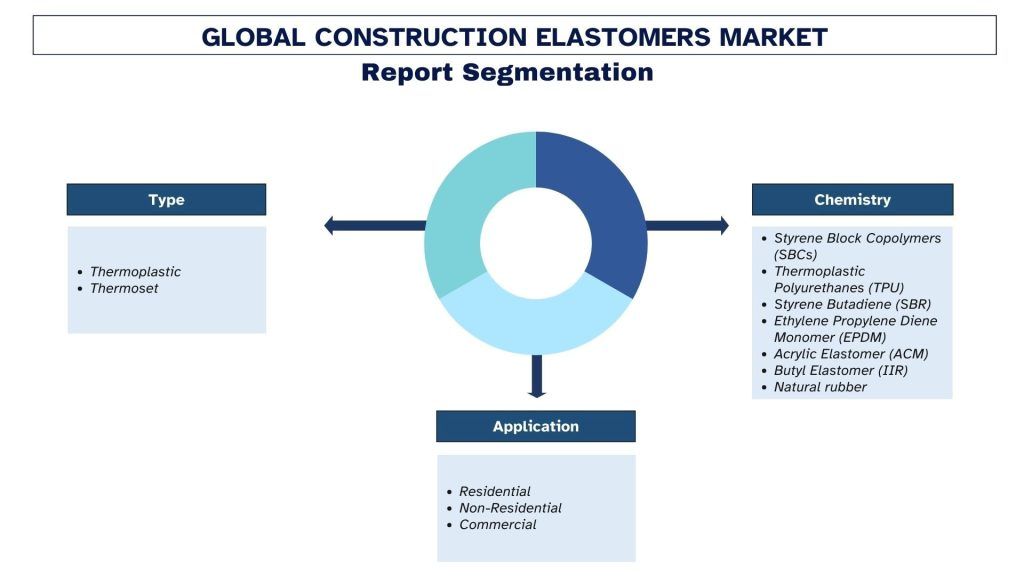
Asia-Pacific is expected to show the highest CAGR
Asia-Pacific is expected to show the highest CAGR growth in the construction elastomers market. The major contributors to the growth of this market are China and India. Excellent physical properties, such as wettability, impact resistance, minimum weight, elasticity, softness, flexibility, superior optics, increased heat resistance, thermal stability, adhesive properties, and improved construction safety, are driving demand for elastomers in residential applications. Moreover, due to the global economic slowdown, the industry has been in decline for the past few years. However, in the projection period, the segment is likely to recover. Furthermore, an emphasis on environmentally friendly and earthquake-resistant buildings will open up new prospects for construction elastomers manufacturers in the region.

Construction Elastomers are competitive, with several global and international market players. The key players are adopting different growth strategies to enhance their market presence, such as partnerships, agreements, collaborations, new product launches, geographical expansions, and mergers and acquisitions. Some of the major players operating in the market are Arkema S.A., Asahi Kasei Corporation., BASF, Dow, Covestro AG, Huntsman International LLC, Teknor Apex, The Lubrizol Corporation, Dupont, Kraton Corporation. Several M&As along with partnerships have been undertaken by these players to facilitate customers with hi-tech and innovative products/technologies.
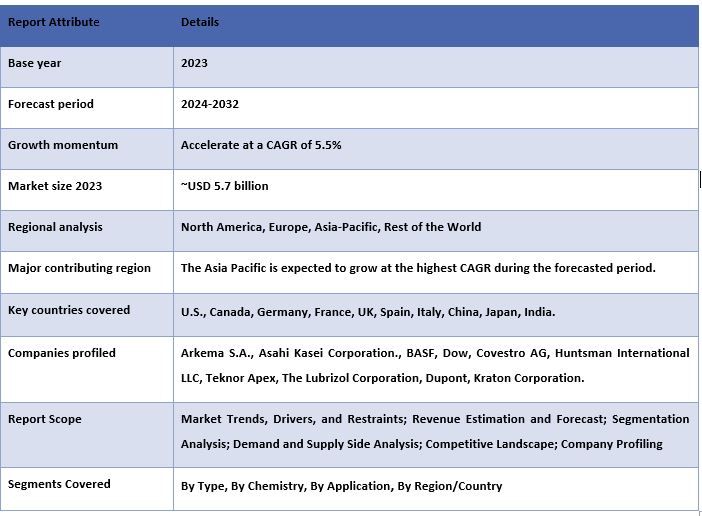
Global Construction Elastomers can further be customized as per the requirement or any other market segment. Besides this, UMI understands that you may have your own business needs; hence, feel free to connect with us to get a report that completely suits your requirements.
1. Market Introduction
2. Research Methodology Or Assumption
3. Executive Summary
4. Market Dynamics
5. Pricing Analysis
6. Global Construction Elastomers Market Revenue (usd Bn), 2022-2032f
7. Market Insights By Type
8. Market Insights By Chemistry
9. Market Insights By Application
10. Market Insights By Region
11. Value Chain Analysis
12. Competitive Landscape
13. Company Profiled
14. Acronyms & Assumption
15. Annexure
Analyzing the historical market, estimating the current market, and forecasting the future market of the global Construction Elastomers market were the three major steps undertaken to create and analyze the adoption of Construction Elastomers in major regions globally. Exhaustive secondary research was conducted to collect the historical market numbers and estimate the current market size. Secondly, numerous findings and assumptions were taken into consideration to validate these insights. Moreover, exhaustive primary interviews were also conducted, with industry experts across the value chain of the global Construction Elastomers market. Post assumption and validation of market numbers through primary interviews, we employed a top-down/bottom-up approach to forecasting the complete market size. Thereafter, market breakdown and data triangulation methods were adopted to estimate and analyze the market size of segments and sub-segments of the industry. Detailed methodology is explained below:
Step 1: In-Depth Study of Secondary Sources:
A detailed secondary study was conducted to obtain the historical market size of the Construction Elastomers market through company internal sources such as annual reports & financial statements, performance presentations, press releases, etc., and external sources including journals, news & articles, government publications, competitor publications, sector reports, third-party database, and other credible publications.
Step 2: Market Segmentation:
After obtaining the historical market size of Construction Elastomers, we conducted a detailed secondary analysis to gather historical market insights and share for different segments & sub-segments for major regions. Major segments are included in the report, such as type, chemistry, application, and region. Further country-level analyses were conducted to evaluate the overall adoption of testing models in that region.
Step 3: Factor Analysis:
After acquiring the historical market size of different segments and sub-segments, we conducted a detailed factor analysis to estimate the current market size of the Construction Elastomers market. Further, we conducted factor analysis using dependent and independent variables such as type, chemistry, application, and Specialty tape regions. A thorough analysis was conducted of demand and supply-side scenarios considering top partnerships, mergers and acquisitions, business expansion, and product launches in the Construction Elastomers market sector across the globe.
Current Market Sizing: Based on actionable insights from the above three steps, we arrived at the current market size, key players in the global Construction Elastomers market, and market shares of the segments. All the required percentage shares split and market breakdowns were determined using the above-mentioned secondary approach and were verified through primary interviews.
Estimation & Forecasting: For market estimation and forecast, weights were assigned to different factors including drivers & trends, restraints, and opportunities available for the stakeholders. After analyzing these factors, relevant forecasting techniques i.e., the top-down/bottom-up approach were applied to arrive at the market forecast for 2032 for different segments and sub-segments across the major markets globally. The research methodology adopted to estimate the market size encompasses:
Primary Research: In-depth interviews were conducted with the Key Opinion Leaders (KOLs), including Top Level Executives (CXO/VPs, Sales Head, Marketing Head, Operational Head, Regional Head, Country Head, etc.) across major regions. Primary research findings were then summarized, and statistical analysis was performed to prove the stated hypothesis. Inputs from primary research were consolidated with secondary findings, hence turning information into actionable insights.
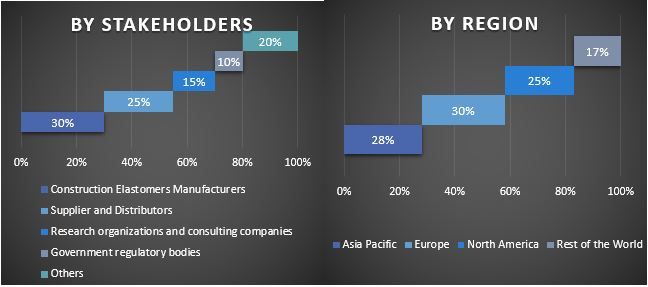
Market Engineering
The data triangulation technique was employed to complete the overall market estimation and to arrive at precise statistical numbers for each segment and sub-segment of the global Construction Elastomers. Data was split into several segments and sub-segments after studying various parameters and trends in the type, chemistry, application, and regions of the global Construction Elastomers market.
The current & future market trends of global Construction Elastomers were pinpointed in the study. Investors can gain strategic insights to base their discretion for investments on the qualitative and quantitative analysis performed in the study. Current and future market trends determined the overall attractiveness of the market at a regional level, providing a platform for the industrial participant to exploit the untapped market to benefit from a first-mover advantage. Other quantitative goals of the studies include:
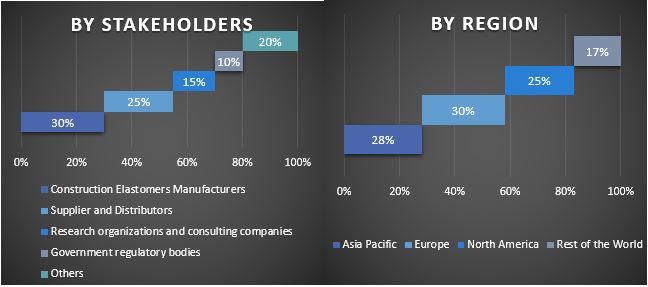
Q1: What are the global Construction Elastomers' current size and growth potential?
Q2: What are the driving factors for the growth of global Construction Elastomers?
Q3: Which segment has the largest share of the global Construction Elastomers by type?
Q4: What are the emerging technologies and trends in global Construction Elastomers?
Q5: Which region will dominate the global Construction Elastomers market?
Customers who bought this item also bought